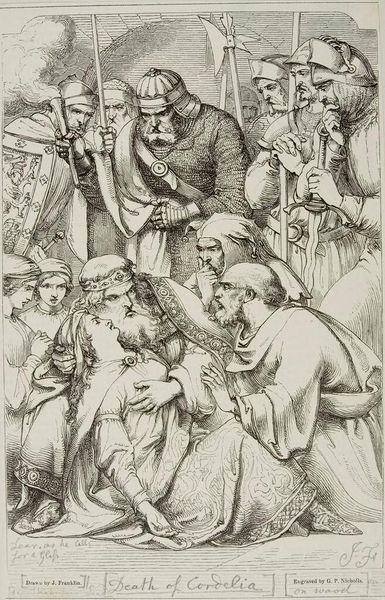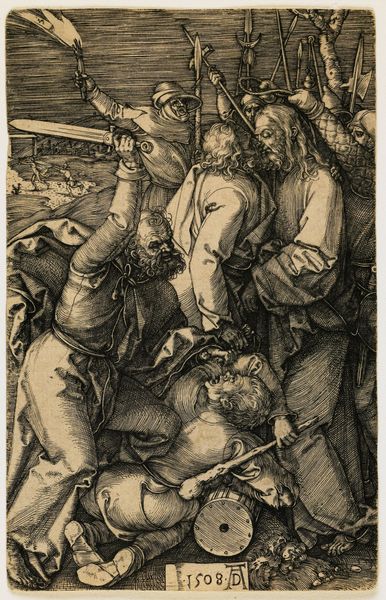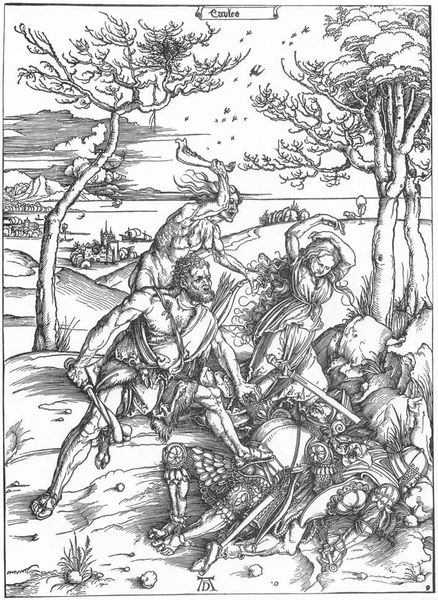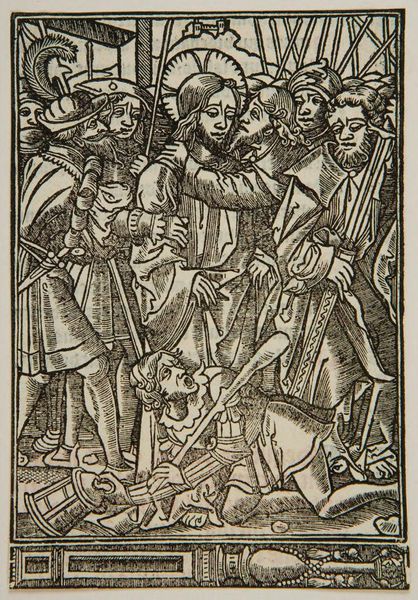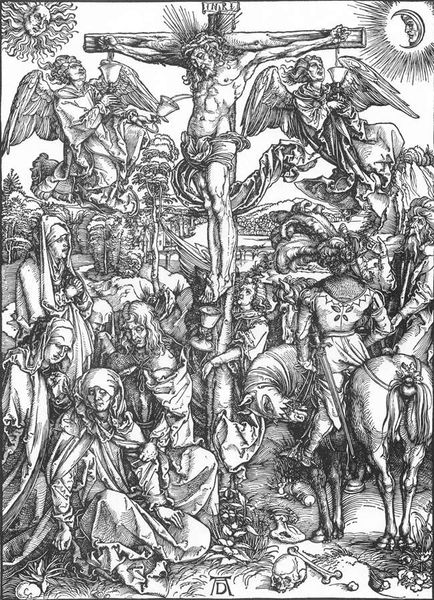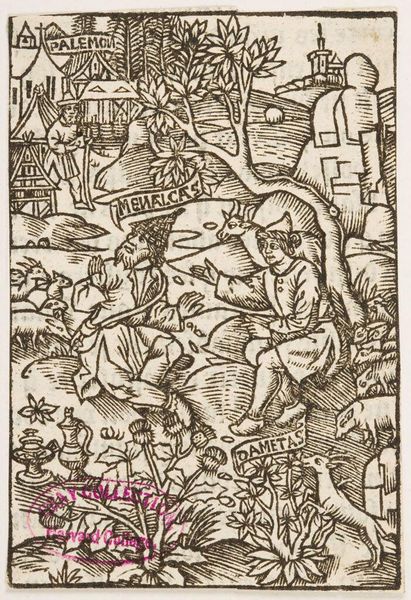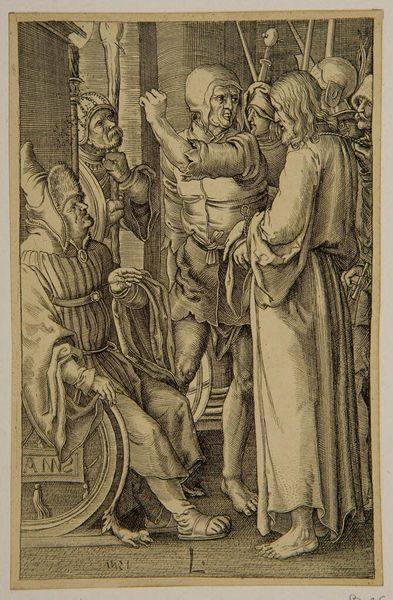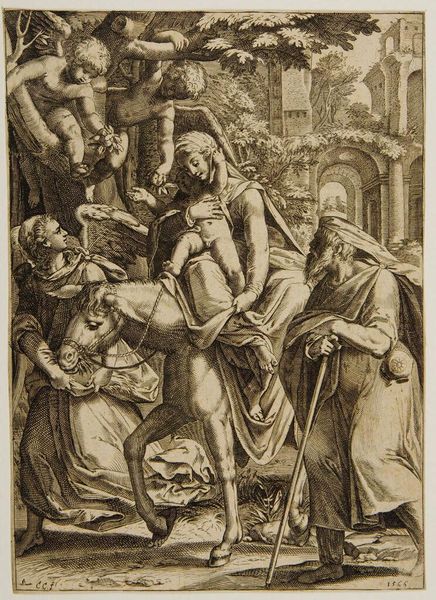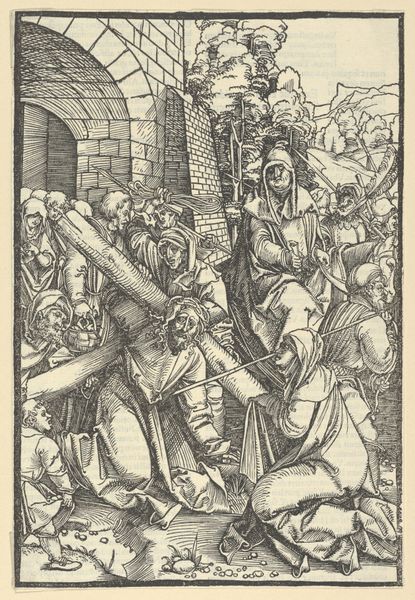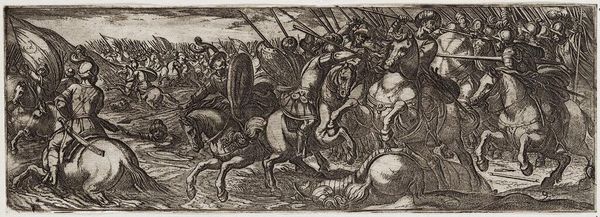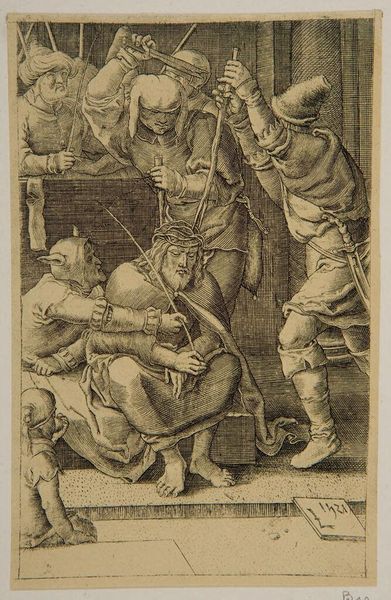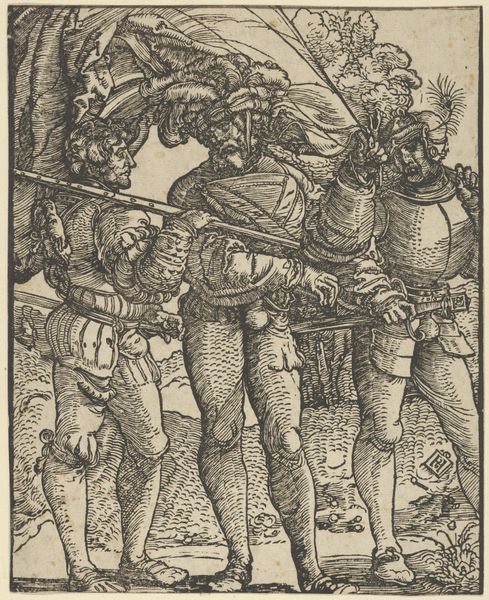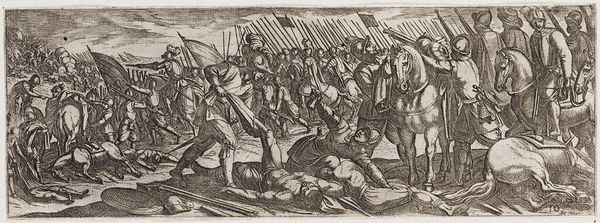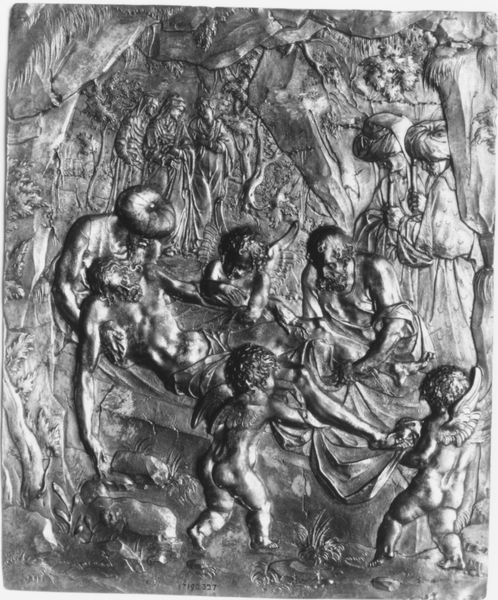
The Battle of Beth-Horon – Joshua Commanding the Sun and Moon to Stand Still
0:00
0:00
drawing, ink
#
drawing
#
medieval
#
narrative-art
#
ink painting
#
figuration
#
ink
#
history-painting
#
pre-raphaelites
Copyright: Public Domain: Artvee
Curator: Here we have Edward Burne-Jones' drawing "The Battle of Beth-Horon – Joshua Commanding the Sun and Moon to Stand Still." The Pre-Raphaelite style is quite evident, wouldn't you say? Editor: Intensely so. There's a medievalism to it that evokes tapestries and illuminated manuscripts. It feels… staged. The monochrome intensifies that impression, almost as if one’s seeing a sculpted ivory panel instead of the bloody, complicated reality of war. Curator: True. The materials, likely ink on paper, are simple, but look at the complexity he achieves. Burne-Jones has focused intensely on details like the armor, and weapons of the soldiers—every individual component adds to the density of the entire illustration. I wonder about the workshop practices, his use of assistants, models… How might their labor impact this historical rendering? Editor: That density contributes to the way Burne-Jones reimagines masculinity. While the subject—the biblical story of Joshua—is steeped in warfare, the style and his technique push beyond standard depictions of brute force. The piece invites questions about the cultural roles of religion and violence, and what is sanctioned as heroic, right? Curator: Right. It definitely plays into Burne-Jones' fascination with narrative art and history painting as well, a tendency he shared with many Pre-Raphaelites. The meticulous, hand-crafted nature pushes against industrialization, championing more “authentic” labor. The creation becomes intrinsically linked to its message. Editor: And beyond the male figure, let’s not forget what kind of cultural weight rests on these mythic stories, and whose voices are pushed aside when narratives of patriarchal strength become the primary ways we think about faith, leadership, and identity. Does Burne-Jones grapple with these complex issues, or simply reproduce them? Curator: I believe that’s part of what makes his work perpetually relevant and always in need of re-evaluation and discussion. I am fascinated by his meticulous, hands-on process, with its connection to artisanal practices. Editor: For me, this piece highlights the ongoing need to unpack inherited power dynamics—those found within art history, certainly, but equally so in the very narratives we choose to represent.
Comments
No comments
Be the first to comment and join the conversation on the ultimate creative platform.
